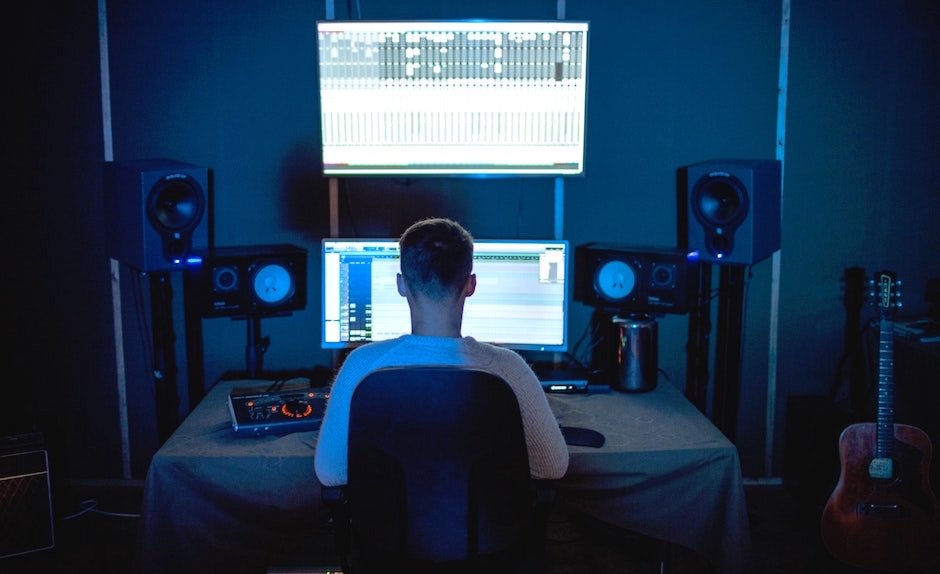Listen Here
27 Jan 2021
It’s Not a Numbers Game

Subscribe to CX E-News
In Part II of my discussion about the Art of Mixing, let’s get past the eye-rolling around the word ‘art’ shall we, and get down to what really makes a good mix engineer emerge as a great one: confidence.
Last issue I finally came out and said it – that audio mixing is an art form, and that without recognition of this simple truth you can’t achieve mastery of the pursuit.
Well, you know… someone had to say it!
I know constructing a sentence around the word ‘art’ in the audio industry – as opposed to the music industry, where it’s tossed around like a salad – generally has people rolling their eyes in sarcastic judgement.
But it’s time we got over this puerile response and embraced our artistic side, because I can tell you right now, if you don’t, you won’t get far in this game.
As I politely pointed out last issue, mixing – as opposed to just knowing how gear works – involves years of dedication to the role; mixing week after week, year in and year out, all while reaffirming that the gig is as much about art as it is science.
These elements are like two sides of the same coin. One doesn’t exist without the other. At times you find yourself staring at one side for too long, of course, to the detriment of the other, tangling yourself up in specifics around technique or equipment.
Eventually, however, as you grow in confidence with your mixing, you start to see both sides as one. That’s when your mixing advances to the next level.
You don’t advance by asking your favourite mix engineer naïve questions like: ‘How do you mix like that?’ or ‘What compression settings do you use?’ – as if there’s even an answer to questions like that!
But if that’s not issue enough, even if you do manage to garner specific information about another person’s mix, attempting to apply it to your next job will typically send it off the rails.
Why? Because at that point, you’ve stopped backing your own judgement, stopped listening objectively, and ceased to think of your own work as a unique piece of art.
From here you can quickly head down the path of a copycat, or worse, a thief.
One other thing I can guarantee you: your favourite mix engineer didn’t arrive at his or her settings by asking someone else. They embraced what they do as an art form and never thought twice about it.
If you do the same, I promise you, you’ll never look back. With this in mind I want to explore some different aspects of mixing that will artistically enhance who you are as a mix engineer.
From my own artistic perspective, many of my mix ‘decisions’ – some of which are laboured over, others of which I’m barely conscious of – are often as much about simple yes/no answers to questions around ‘Do I like that?’ as anything else.
It’s this principle that informs much of what the art of mixing is all about.
Sure, you can be focussed on the numerical value of a reverb’s tail, or curious about how its early reflection might transform your mix – I do that all the time – but still the question remains: ‘Do I like it?’
In the end, the values of things: reverb times, attack times, levels of instruments, the crossover point of a filter etc, in and of themselves mean nothing. They certainly mean zero to the end listener.
Nothing drags you away faster from your confidence in a sound than a rule
Each question you ask yourself during the course of a mix is simply a means to that end: ‘Do I like it?’ The answer is not about the numerical values at all.
So, by extension; developing yourself as an artist whose pursuit is mixing, you will ‘find yourself’ – your style, as it were – by answering these sorts of simple questions honestly, with confidence in your ear, and without fear or concern for what other people (apart from those with whom you work) might think.
You will NOT ‘find yourself’ by asking others what settings are ‘best’ for something, because that’s not learning, nor is it art. In fact, it’s tantamount to admitting: ‘I don’t want to learn this for myself, I want the answers given to me by someone else.’
Moreover, any answers you obtain to these sorts of questions cannot be applied to your work anyway, because the numbers simply aren’t objectively relative to anything.
To labour the point for a moment: of another engineer, you might ask, for example: “Should I roll off my kick drums at 60Hz?” Well, should you? Put another way – and while you’re at it – ask the engineer this: “Should I like the colour blue?”
Can you see how the question is absurd?
How could the numeric value of a sound in someone else’s work ever be applied to yours when every single kick drum (and musical context) is different?
A far more progressive question to ask yourself – about your own mix – is this: ‘Do I like how the kick drum sounds now, or not?’ If the answer to your question is an honest ‘no,’ how would you otherwise like it to sound?
To your discerning, confident ear, does it sound better rolled off at 45 or 35, or maybe it sounds cool rolled off at 235?
In the end, these values mean very little beyond what they provide your mix, and whether you like these sounds in the context of the music in front of you, right now! Everything else is horse excretion.
Avoid Rules
Nothing drags you away faster from your confidence in a sound than a rule.
Countless engineers apply them in all sorts of ways to myriad situations, almost always to their detriment. It gets so bad at times that some mix engineers will ascribe a theory to some aspect of their workflow with almost religious fervour.
Ironically, this often renders them deaf to the true qualities of the sounds playing right in front of them.
I once had a fellow engineer mix for two days straight with his speakers out of phase, even though, right in front of him on his own custom-built master section was a phase flip button.
He refused to hear the problem – let alone acknowledge it and flip the switch – because his system “could not possibly be the cause.” In his words, “The studio just sounds shit!”
Once invited to hear the problem for myself, I discovered the issue in about 10 seconds because I hadn’t been blinded, as he had, by a misguided faith in his equipment.
Rules are for roads, not mixes. Develop them you will, and learn from their shortcomings you most certainly will! But that’s okay – as long as you’re learning, you’re advancing.
Back Your Endeavour
When it comes to mixing, there’s always the perennial question: ‘How do I know when my mix is finished?’ This is a tough question for most engineers to answer, particularly so when viewed from a purely scientific standpoint.
Assessed from this side of the coin, you could be forgiven for thinking that there is, indeed, no answer! But if nothing else, what this dilemma illustrates is that not all questions around mixing are quantifiable or technical.
… what this dilemma illustrates is that not all questions around mixing are quantifiable or technical.
On the contrary, most revolve around artistic concepts like taste, preference and subjectivity. This is why you need to develop a confidence in your own artistic perspective: for without it, many of your most important mix decisions will be faced in the absence of this key ingredient.
The key to knowing when a mix is finished is by developing an insight into how you work – a bit like self-analysis.
Get to know yourself: the things you like to hear in a finished mix, what encourages you to keep going, what your aims for the mix originally were, and whether you’ve achieved that outcome.
You might want the mix to sound rough or polished, aggressive or enormous. If you think you’ve managed all that: you’re excited by the outcome and can’t think of anything else that might add to the spectacle, then stop.
Personally, I find – for me at least – that a mix is essentially finished when I cease to have a reaction to it. I become aware that I’ve stopped working on the song soon after I’ve ceased fiddling with automation, tweaking EQ and adjusting compression settings, and am now only listening.
If I manage to get through the song a few times without stopping to adjust something, I know we’re close, if not done.
After that there might be a debate or two with any others involved around some minor changes to a sound, but these will rarely have any significant impact on the final mix.
Over time, your feelings around all these different aspects of mixing will inevitably change, but that’s fine too.
That’s art for you.
Andy Stewart owns and operates The Mill in the hills of Bass Coast Shire in Victoria. He’s happy to respond to any pleas for recording, mixing or mastering help… contact him at: andy@themill.net.au
See Part I – ‘The Darkness and the Light by Andy Stewart‘, CX Magazine, November 2020 https://www.cxnetwork.com.au/the-darkness-and-the-light
Lead image: James Owen on Unsplash
CX Magazine – December 2020
LIGHTING | AUDIO | VIDEO | STAGING | INTEGRATION
Entertainment technology news and issues for Australia and New Zealand
– in print and free online www.cxnetwork.com.au
© VCS Creative Publishing
Subscribe
Published monthly since 1991, our famous AV industry magazine is free for download or pay for print. Subscribers also receive CX News, our free weekly email with the latest industry news and jobs.







